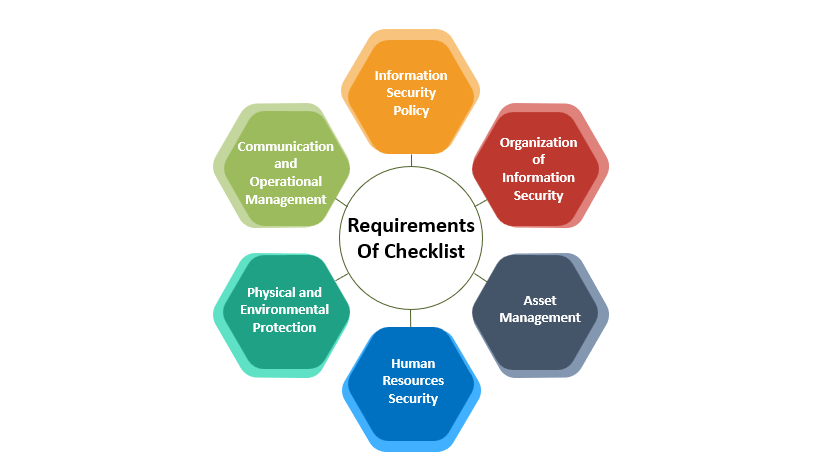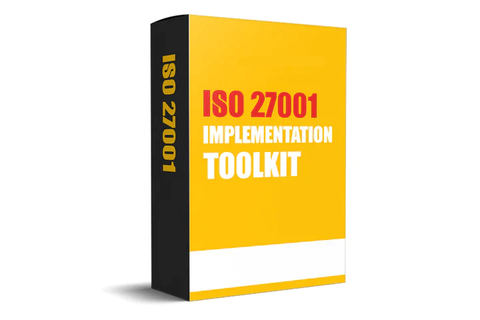What is ISO 27001 Requirements Checklist?
The ISO 27001 Requirements Checklist provides an overview of requirements for protecting information. The checklist is intended for managers, security professionals, and auditors responsible for implementing ISO 27001. This checklist will help you identify any areas that may require additional measures or a review of existing controls.

This ISO 27001 Checklist Will Give You The Basic Information About ISO 27001 Requirements:
1. Before you begin the implementation of this checklist, it is important to have a policy on information security in place. This policy will help guide your decisions and determine the amount of effort you are willing to put into implementing each item on this checklist.
2. ISO standards have 12 "mandatory requirements" that must be met in order to receive a certification as meeting ISO 27001.
ISO 27001, an international standard, provides guidelines on how to create, implement, maintain, and operate information security management systems.
The ISO 27001 checklist contains 26 items, which are organized into six categories.
a) Information Security Policy
b) Organization of Information Security
c) Asset Management
d) Human Resources Security
e) Physical and Environmental Protection
f) Communication and Operational Management
Why is ISO 27001 a checklist important?
ISO 27001, a standard for security management, helps organizations protect their data assets and reduces the risk of loss. The standard guides managing risks and controls to protect information assets and how to maintain these standards and controls throughout time.
These guidelines are a great way to improve the security of your data and increase customer trust.
ISO 27001 Checklist: Implementation Steps
1. Management Support
It is crucial to have strong support from management when implementing ISO 27001. The implementation will be more successful if the management is on board. Here are some tips to help you get your managers involved in an ISO 27001 implementation.
Know the risks and benefits of non-compliance:
- Find someone in your organization that can help you make decisions and provide guidance.
- Tell all levels of management what you have done throughout the entire process. This includes planning, implementation, and beyond.
- Make a plan and follow it.
- Establish a line of communication with yourself, your management, and any other parties that are relevant to the implementation of ISO 27001. This will ensure that everyone is informed of all steps taken. It will remove any obstacles or barriers you may encounter and demonstrate the benefits of compliance at all levels.
2. Treat it as a Project
The ISO 27001 Checklist is a list that contains the actions an organization must take to comply with the ISO 27001 Standard. It's important to understand the standards and regulations that apply to your industry before starting a project. First, you need to "identify requirements," which means gathering relevant information on policies, laws and regulations, industry standards, etc. that are applicable to your project.
3. Define the Scope
ISO 27001 is an international standard that focuses on information security. The International Organization for Standardization created it to give organizations guidance on how to maintain their data and assets securely.
ISO 27000 is a series of management systems with seven different management systems. One of these, the "Information Security Management System," has five major components: Asset Identification, Risk Assessment, Control Implementation, Information Security Policy Statement, and Awareness Training.
Before implementing the system, you should define its scope. Determining what should be protected or secure within the broader strategy of your organization is defining the scope. You'll also have to determine if any other parties could be affected by your information security decisions.
4. Information Security Policy
Information Security Policy provides a framework to manage information security risks. The policy outlines the expectations of an organization regarding how users are to behave while using information systems and what will happen if these expectations aren't met. Implementation plan is the most important part of any policy. It outlines who will be accountable for ensuring that the policy is followed.
Your Personal Information is 100% secured with us. We do not save/share your data with any third party.
- Information Security Policies must be customized to your organization's specific needs. No "one-size-fits" solution" will cover all situations or requirements. Consider what you want to protect, what types of attacks are possible, and whether your employees only have local access or if they can access the network. These factors will determine what kind of policies you need.
- The policy should also include a section on how to inform employees of security policies and encourage them to be aware of their importance. This is the place to include your own training program for everyone to have access to when needed.
5. Risk Assessment is a Method of Assessing the Risk.
ISO 27001 Checklist's risk assessment method is a systematic way to identify possible security risks and determine how to best mitigate them. It involves four stages:
Step 1: Identify the object you want to protect
Step 2: Establish your protection objectives
Step 3: Assess your vulnerabilities
Step 4 - Evaluate risks.
Checklist of requirements and steps for implementation
6. Risk Assessment and Risk Treatment
ISO 27001 Information Security Management requires a risk assessment. This should be done before any treatment of the risks. When performing a risk analysis, you should consider:
1) Identify any risks that could affect the objectives of your company.
2) Determine whether these risks will likely occur in a certain time frame.
3) Assess the severity of each risk based on its probability and impact.
4) Assess the tolerance level for each risk. After you've completed the risk assessment, you'll know why you'll require more attention or extra protection.
7. Statement of Applicability
The Statement of Applicability (SOA) is a measure that defines the scope and application of an organization’s measures. The Statement of Applicability will include:
- The organization profile.
- The principles governing the design, operation, and risk management of information systems.
- The criteria for selecting suppliers of products and services that are important to the security of its information systems.
- Roles and responsibilities for implementing SOA requirements
8. Risk Treatment Plan
ISO 27001 Checklist includes a Risk Treatment Plan.
- This helps identify, assess, and control the risks that may affect the integrity, confidentiality, and availability of information assets.
- The process of identifying risks involves examining the potential consequences they could have if they became real. The risk treatment plan contains controls that will reduce or eliminate the risks, as well as contingency planning in case these do occur.
9. Operate the ISMS
The ISO 27001 Checklist for Operate ISMS is an important part of an Information Security Management System. This checklist explains how to manage your ISMS, including managing risks, controls, and security incidents.
The checklist is divided into four sections: Planning an Information Security Program, Developing Policies and Procedures, Standards, Guidelines, and Documentation, Implementing Controls, and Measuring Performance Metrics.
10. Monitor the ISMS
ISO 27001 is the standard that describes how to monitor an Information Security Management System. This checklist will assist you in implementing ISO 27001 within your organization. This checklist includes all the steps and procedures required for a successful ISMS implementation.
- Step 1: Define the items that must be monitored in your ISMS. Consider risks, vulnerabilities, and threats, as well as the impacts of not meeting standards. This step includes assigning the responsibility for monitoring each item to an individual or group that will work with stakeholders on this task.
- Step 2: Create a plan to monitor these items using the existing resources, such as policies or guidelines. Consider any resources you may need.
10. Plan for Internal Audit
The Internal Audit Plan of ISO 27001 Checklist describes the auditing process and its goals. The document also describes how an audit is to be conducted, including the scope of the auditor, the information that should be collected during audits, and who should perform audits. The plan outlines how auditors are to perform their duties and gives guidelines on managing the risks related to system security.
Conclusion
In a world where data breaches and cyber threats are prevalent, investing in ISO 27001 compliance through a checklist is an investment in the long-term success, reputation, and resilience of any organization. It is a proactive step towards securing sensitive information, achieving regulatory compliance, and demonstrating a commitment to best practices in information security.
By using an ISO 27001 checklist, organizations can systematically assess their security measures, identify vulnerabilities, and implement robust controls. This systematic approach helps mitigate risks, enhance data protection, and build trust with stakeholders.




